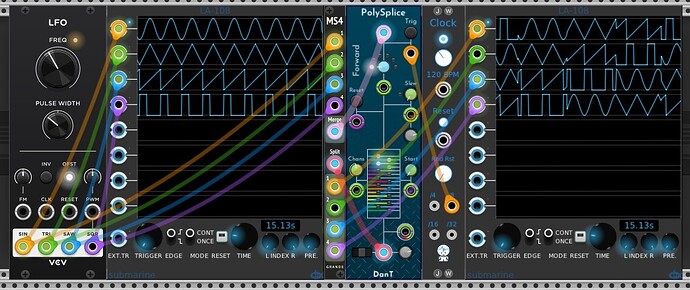PolySplice (DanT)
Trigger-dependent channel selector/switch for a polyphonic input with up to 16 channels. With each trigger input, another input channel is routed to the output.
Mono- or polyphonic output. Six different modes of progression. Slew.
In the example (see pic), 4 different LFO shapes are merged into one polyphonic cable and fed into PolySplice. With each trigger (here gate from a clock), the next channel is routed to the output. Output is set to polyphonic (Inputs Incremental), resulting in 4 different phase-shifted complex LFOs, each with consecutive portions of the source LFOs.
UPC_PolySplice (DanT)_20241010.vcvs (7.7 KB)
